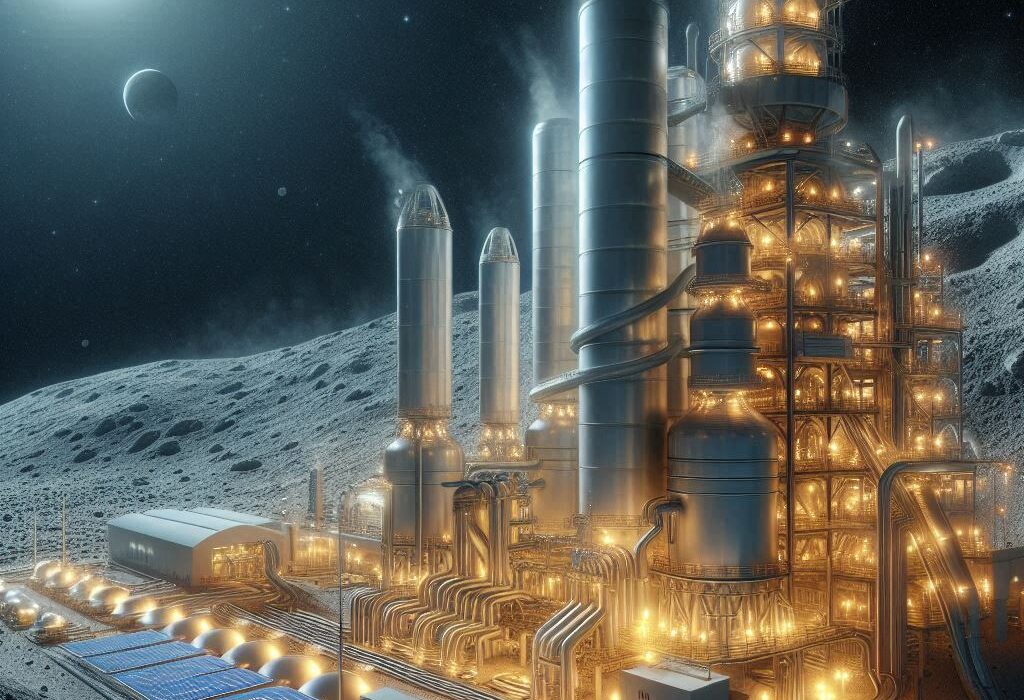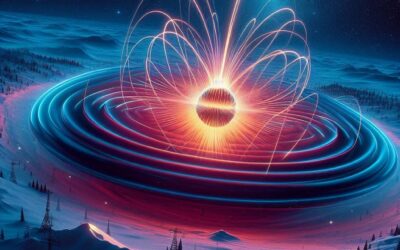An international team of engineers and space scientists has made significant strides in calculating the energy requirements needed to use moon dust, or regolith, as a source for producing rocket fuel. In their paper published in Proceedings of the National Academy of Sciences, they provide a comprehensive analysis of the complex processes involved in transforming moon regolith into rocket fuel and transporting it to a space-based fueling station. Their work addresses a crucial challenge that could play a significant role in the future of space exploration: sustainable fuel production in space.
As the world’s space agencies and private companies continue to explore the possibility of long-duration human space missions, particularly missions to Mars and beyond, one of the most critical obstacles is the need for fuel. Transporting fuel from Earth to distant space destinations is expensive and inefficient, making it impractical for long-term missions. Therefore, scientists and engineers are exploring innovative ways to produce fuel in space, and moon regolith presents an attractive option.
The moon’s surface is rich in regolith, a mixture of fine dust and rocky material that covers the lunar surface. Regolith contains a variety of valuable materials, including oxygen, which can be separated and used as a key component in rocket fuel. The goal of the study was to determine how much energy would be required to convert regolith into usable rocket fuel, specifically liquid oxygen, and then transport it to a space station for refueling spacecraft, such as starships.
Converting Moon Regolith to Rocket Fuel
To produce rocket fuel from regolith, the first challenge is separating oxygen from the other materials in the regolith. Past research has suggested that regolith could be a viable source of oxygen, specifically from a mineral called ilmenite, which is found in abundance on the moon. Ilmenite is a compound of iron, titanium, and oxygen, and it is the oxygen in ilmenite that can be separated and used in rocket propulsion systems.
The researchers in this study focused on a method that combines ilmenite with hydrogen to produce liquid oxygen. The hydrogen could be extracted from lunar water ice, which has been confirmed to exist on the moon, particularly in permanently shadowed craters at the lunar poles. The process involves heating the ilmenite and hydrogen to high temperatures, which then produces oxygen and water. This is a well-established method, known as the hydrogen reduction process.
The challenge, however, lies in the amount of energy needed to carry out these processes, particularly the high temperatures required to break the chemical bonds between oxygen and the other elements in ilmenite. This heating process is energy-intensive, and the researchers estimated that it would require substantial power to extract enough oxygen from the regolith to be used as rocket fuel.
Energy Requirements and Challenges
The energy requirements for producing rocket fuel from regolith can be broken down into three main stages: reaction, oxygen extraction, and liquefaction.
The first stage involves reacting ilmenite with hydrogen. This reaction generates water, and it requires a significant amount of energy because of the high temperatures involved. The second stage is the separation of oxygen from the other byproducts of the reaction. Finally, the third stage is the liquefaction of the oxygen, which involves cooling it down to extremely low temperatures. Each of these stages requires careful engineering to ensure that the process is energy-efficient and scalable.
The team calculated that producing liquid oxygen from regolith using this method would require approximately 24 kWh of energy for each kilogram of liquid oxygen. This is a substantial amount of energy, but it is not out of reach, especially if renewable energy sources, such as solar power, are harnessed in space.
Fuel Production for a Starship
Once the energy requirements were calculated, the team estimated how long it would take to produce enough fuel for a starship—a large spacecraft designed for interplanetary travel. Based on the typical fuel capacity of a starship, the team concluded that a fuel tank would likely hold around 500 metric tons of liquid oxygen. Given the energy demands of the process, they estimated that it would take approximately two years of continuous operation to produce enough fuel for one starship for a single voyage, assuming the system operates at full capacity.
The researchers acknowledged that the time required for fuel production could be reduced by using multiple fuel production systems operating simultaneously. By scaling up the operation and using multiple systems, the time needed to produce sufficient fuel could be significantly shortened, potentially enabling more frequent missions or the refueling of multiple spacecraft at once.
The Future of Space-Based Fuel Production
The ability to produce rocket fuel on the moon is an exciting prospect for future space missions. In-situ resource utilization (ISRU), which refers to using materials found on other planets or moons to support human activities, is a key strategy for long-term space exploration. By extracting resources like oxygen from the moon’s regolith, we could reduce the need to transport fuel from Earth, which would save both money and resources.
While this study provides a promising step forward, there are still many challenges to overcome. For example, extracting hydrogen from lunar water ice and ensuring that the fuel production process is both efficient and reliable will require significant technological advancements. Additionally, the energy demands for the entire operation would require robust and sustainable energy sources, such as solar power, which is abundant on the moon.
This research also contributes to the broader field of space propulsion systems. While many scientists are exploring theoretical propulsion methods, such as nuclear-powered engines or ion drives, traditional chemical propulsion systems that rely on rocket fuel are still likely to play a significant role in future space missions. The ability to produce fuel on the moon would allow for more flexible mission planning and reduce dependence on Earth-based resources.
In the coming decades, as space agencies like NASA, ESA, and private companies like SpaceX and Blue Origin continue to explore the possibilities of interplanetary travel, the idea of using lunar resources to support these missions will likely become increasingly important. If this method of converting moon regolith into rocket fuel proves viable, it could lay the foundation for the construction of space refueling stations, allowing spacecraft to refuel in space, drastically reducing the need for Earth-bound fuel launches.
More information: Dorian Leger et al, Modeling energy requirements for oxygen production on the Moon, Proceedings of the National Academy of Sciences (2025). DOI: 10.1073/pnas.2306146122






